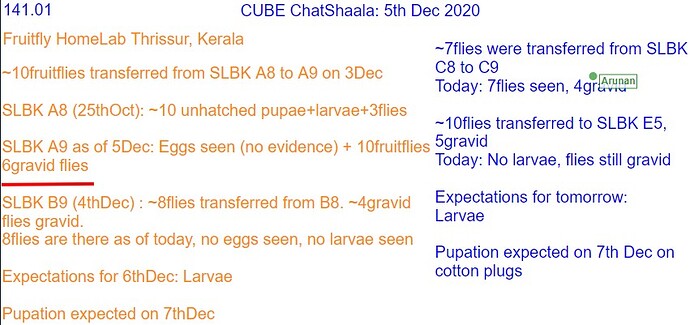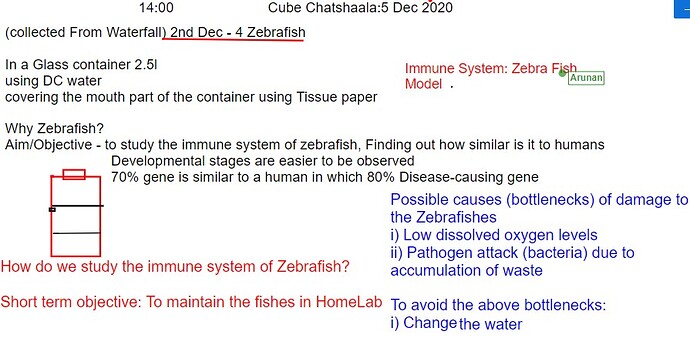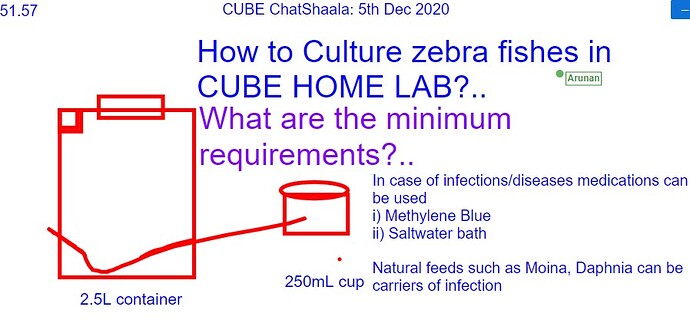Quoted by @saswathy679
5 December 2020 [CUBE Chatshaala]
Discussed about other model system was Fruit flies.
Objective : To identify native single culture of fruit flies as Native Drosophila Melanogaster by looking at morphological characteristics relevant to Family Drosophilidae, Genus Drosophila and Species melanogaster
Why D.melanogaster? What is the importance in this particular organism🤔?
Drosophila melanogaster has been extensively studied for over a century as a model organism for genetic study. Drosophila melanogaster, the most one of the species except in whole world for many experimental study done upon in this one particular organism. also 75% gene is related to human gene. enabling molecular genetics studies.the study of animal development and behavior, neurobiology, and human genetic diseases and conditions.
Story was when I maintain single line culture of fruit flies quite some months at my home lab. Past two weeks iam not at the my home for reasons. so I kept my culture bottles out side at home sheds . After 2 weeks later I back in to my home, I can see only few number of flies which are remains in all single line culture bottles. Also crowded with lots of unhatched/hatched pupae & growing some minute larva in media side. Media are slightly changed to liquidly. I am trying to save those progeny’s which are came from one mother (Pure culture - one species)
Single Line Cultures - Fruit Flies
Bottukadavu Thrissur Kerala.
SLBK A, SLBK B, SLBK C, SLBK E
4 Single Line Cultures
SLBK - Single Line Bottukadavu Kerala
New stock Cultures - SLBK A9, SLBK B9, SLBK C9, SLBK E5. (SLBK F - I lost it  )
)
SLBK A9 -
Transferred flies on 3/12/2020
Total number of flies : 10
Gravid flies : 6
SLBK B9 -
Transferred flies on 3/12/2020
Total number of flies : 8
Gravid flies : 4
SLBK C9 -
Transferred flies on 3/12/2020
Total number of flies : 7
Gravid flies : 4
SLBK E5 -
Transferred flies on 3/12/2020
Total number of flies : 10
Gravid flies : 5
1month & 10days old stock Cultures
SLBK A8, SLBK B8, SLBK C8, SLBK E4:-
SLBK A8 -
Transferred flies on 25/10/2020
Total number of flies : 3
Gravid flies : 1
SLBK B8 -
Transferred flies on 25/10/2020
Total number of flies : 3
Gravid flies : 0
SLBK C8 -
Transferred flies on 25/10/2020
Total number of flies : 5
Gravid flies : 2
SLBK E5 -
Transferred flies on 25/10/2020
Total number of flies : 0
Gravid flies : 0
Expectations on new stock culture flies of SLBK A9, SLBK B9, SLBK C9, SLBK E5
Expectations :-
•3/12/2020 - Flies lay eggs (0 Day)
•4/12/2020 - Eggs will hatch to small larave (1 Day)
•6/12/2020 - Visible larvae on bottle wall (3 Day)
•7/12/2020 - Expecting pupae (4 Day)
•11/12/2020 - Next generation flies (8 Day)
Observation :-
•3/12/2020 - Transferred flies, Observed 5 Gravid flies (mother flies)
•5/12/2020 - Expecting eggs / small larave in side the bottle wall as well as media.
But can’t seen any larva on bottle wall as well as media side  .
.
•No dead files observed in Bottles.
Taking better picture for identifying females flies are gravid flies or not. And make sure how many flies are their. And how to take better photos of fruit flies which are living in inside the bottles - Discussed today Chatshaala.
CUBE Discussion
5th December
Objective- to study the innate immune system of zebrafish and how similiar it is to that of humans.
Short term goal- to maintain and breed them in a minimum setup
Zebrafish model - received 4 zebrafish in the evening of 2nd December. Out of which 2 are male and the other 2 female. They were collected from Kakochang waterfall,Bokakhat (near Kaziranga National park) Assam.
The set-up consists of a glass container of 2.5L filled with decholrinated water.I change the water every 2 days and feed them with micro-pellets.
Does changing of the water so frequently add to the stress and eventually cause death?
No the fishes are not so fragile as we make of them. The natural environment that we find them, it also has human activity which causes the water’s pH, temperature, depth to change but yet it survives. Keeping this in mind , my assumption is no.
How can we change the water?
I personally change it by taking out the fishes in a 250 ml container with the same water that they were in. Then i clear up the water in the 2.5L glass container and fill it with freah decholrinated water. And transfer the fish from the 250 ml container along with the old water.
Why zebrafish?
Because it’s a new exciting model system,which is easier to keep and reproduces about 200 eggs
It’s transparent embryo is easy to manipulate and study developmental stages of it’s life.
And also because it’s 70% genes are similar eith human and 80% being disease causing genes.
The possible expectations of death are
- decreased levels of oxygen
- pathogens
The possible solution-
To change the water eveey 2 day/ when the container becomes too dirty
Can we use algae water/ algae to feed it?
As we are using decholrinated tap water , the presence of water fleas are rare and it also adds a complexity to the set up. So instead of introducing it , we just feed it with artemia or micro-pellets.
What are the methods used to prevent the cannibalistic nature of zebrafishes
And how does the generation of the zebrafish continues in nature if it’s eaten up
In captive we use a number of methods like _breeding box_ , marbles, plants and net / mesh like structures to avoid the parents from eating the eggs.
But in the nature, what might happen is, pebbles take the role of marbles and maybe the eggs goes unnoticed by the parents and also the flow of the stream might play a part.
Can they breed without any plants?
If they are given the required light period I don’t see a reason why it’d not mate and reproduce but adding aquatic plants can be helpful but not necessary



